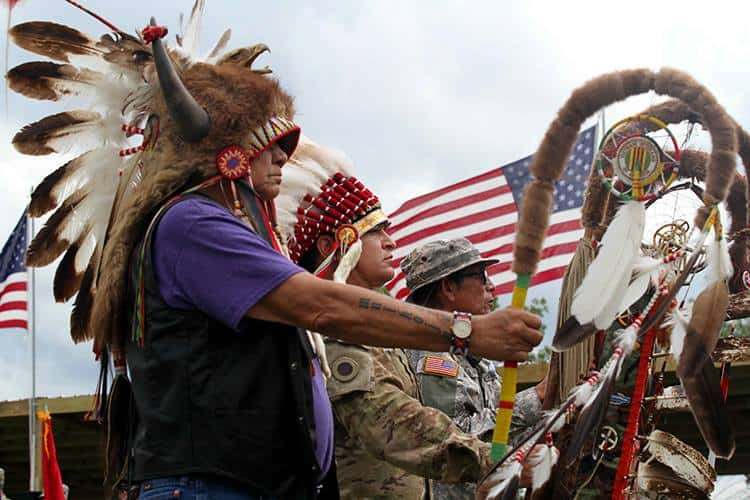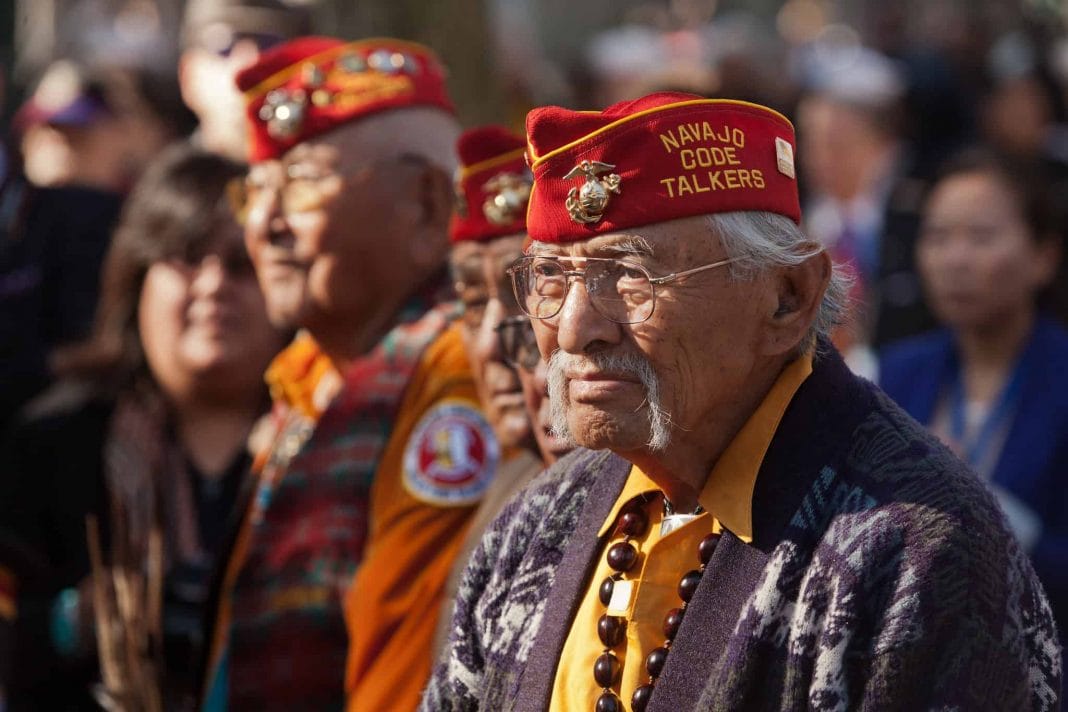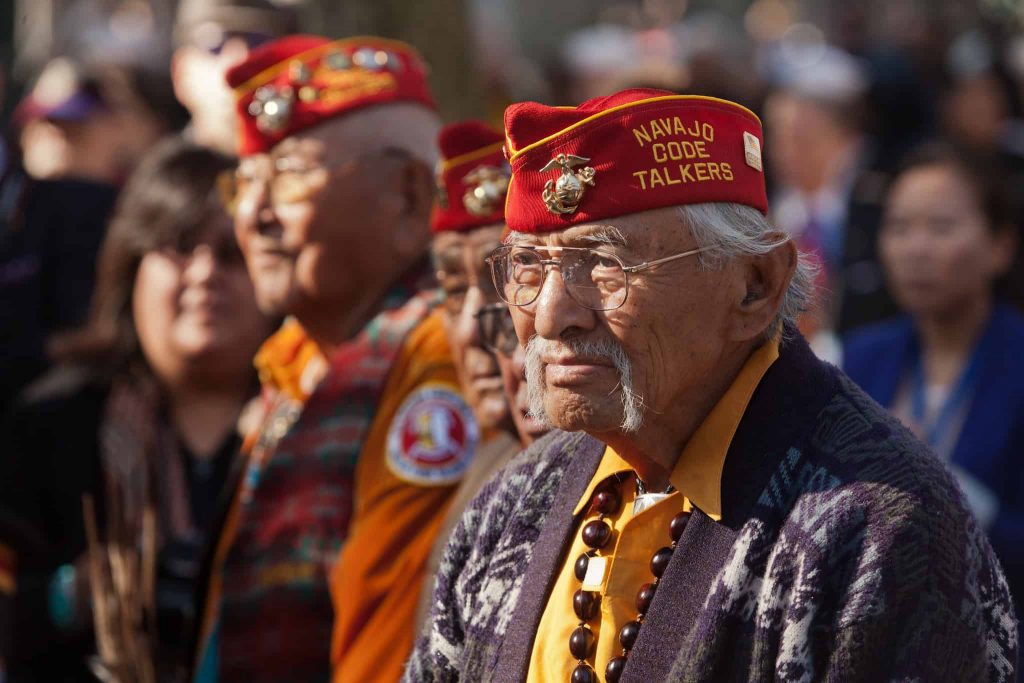
Native Americans fought in foreign world wars because they wanted to belong.
All humans want to belong. It’s an objective reality, and a universal desire of our species.
Belonging comes in many forms. Some forms align vertically, with a connection to the divine, nature, and the universe. There is a sense of majesty to take part in something larger than self. It helps some find meaning in a chaotic existence. It broadens a narrow scope.
Horizontally lies other layers of belonging, such as relationships, tribes, ideologies, and groups. We are social beings at heart. We must cooperate for our survival, however that may look.
Nature is another point on the horizontal axis of belonging.
“There is an ancient faithfulness in nature. Mountains, fields, and shorelines are still to be found in the same places after thousands of years”, writes the late Irish poet, John O’Donohue.
It is a lost art in Western society: to cherish nature and feel connected to it in an enriching way.
Native Americans master the art. They always have, for millennia.
Long before European colonizers forcefully took indigenous land, tribes in North America belonged. They belonged to the forests, mountains, plains, and deserts, to regions, territories, and hamlets, and amongst the animal kingdom in the wilds.
Strong in Spirit
Spirituality is at the core of Native American culture. Diverse theologies and pantheons of spirits exist among the many populations. Tribes are the social breakdown of indigenous peoples, and the idea of community itself is borderline divine.
An emphasis on community is a stark change from the glorification of the individual that has ideologically colonized the indigenous lands of North America over the centuries.
Native American wisdom says,
“Honor the sacred. Honor the Earth, our Mother. Honor the Elders. Honor all with whom we share the Earth: -Four-leggeds, two-leggeds, winged ones, swimmers, crawlers, plant and rock people. Walk in balance and beauty.”
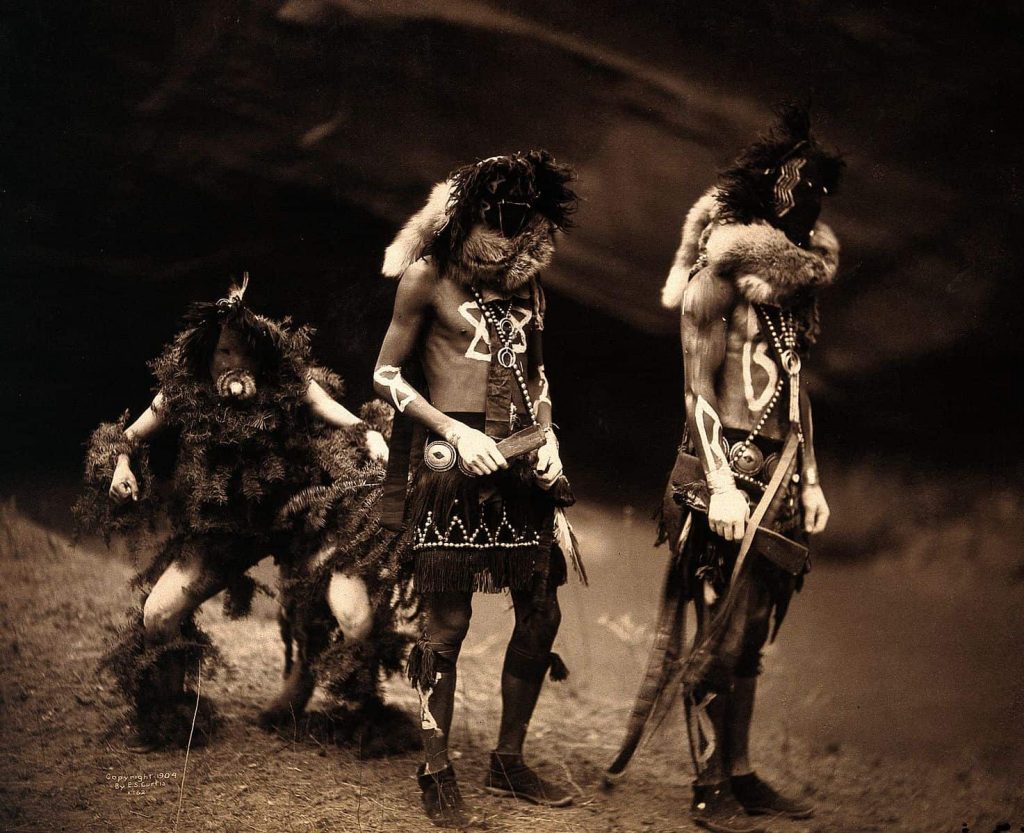
Wisdom of the ancients
What does any of that have to do with the relationship between Native Americans in the World Wars? Ruminating on esoteric ideas of belonging doesn’t really mesh well with the brutal nature of global conflict.
It’s important though. Esoteric thought is a tenet of Native American culture. We can learn much from the wisdom of the tribes that can help understand their inclinations towards patriotic servitude.
Native Americans embody the warrior spirit, but also act as sages, known for profound storytelling, and living poetically. Allegory and written wisdom reflect both nature and nurture. There are proverbs of war, of appreciation for nature, and of the importance of living in harmony.
They were free of outside cultures and ideologies. There were no foreign occupiers forcing them to conform to a societal structure devoid of their timeless traditions.
That changed after the European conquest in the 16th century. It was then that belonging began its descent into obscurity.
Conquest
In the 16th century, European settlers formed colonies along the East coast of America. These colonies were extensions of the British empire. They ended up collectively rebelling against the crown, planting the seed of liberty that eventually grew into the United States – the self-proclaimed “land of the free” – which sounds good on paper, but is far from accurate with the nation’s treatment of indigenous people.
The all-encompassing history of Native Americans is dense, and not the intended subject of focus. It is important to note, however, the way indigenous people have suffered, from the signing of the Declaration of Independence to the 21st century.
Between the late 1700s and late 1800s, the Indian Wars took place, spanning across the entire country. These wars were not the first of their kind post-European colonization. Far from it, but still unique, in the sense that they were some of the last conflicts before the industrial age fought between Native Americans and white settlers.
Pushed Beyond the Brink
Western expansion and war drove ancient indigenous populations out of their sacred land. There were few options given: either assimilate to American culture or perish.
Some chose the former outcome; many faced the latter. History writes:
“By the early 20 century, the American-Indian Wars had effectively ended, but at great cost. Though Indians helped colonial settlers survive in the New World, helped Americans gain their independence and ceded vast amounts of land and resources to pioneers, tens of thousands of Indian and non-Indian lives were lost to war, disease and famine, and the Indian way of life was almost completely destroyed.”
Perspective leads to sorrow when imagining that reality. Cemeteries of history are abundantly filled with the mass graves of conquered empires. It is almost inescapable, and even the United States is not immune.
As it stands, the conquest of the Native Americans is a cataclysmic betrayal of the values and ideals embedded in the Constitutional framework. It would be hard to imagine the indigenous populations that survived into the 20th century would ever want to help the nation that took their land and decimated their people and culture, especially through the act of military service.
That is why it is mesmerizing to picture Native Americans in the World Wars.
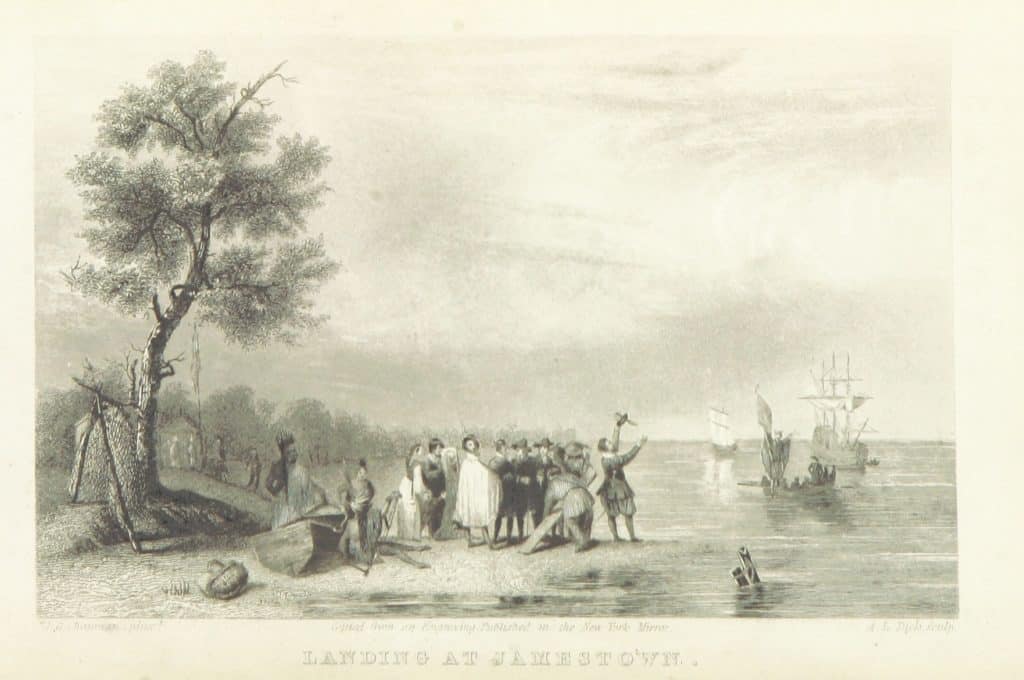
Native Americans in World War I
An assassination was all it took to propel the world into its first large-scale conventional conflict.
In 1914, an already primed powder keg in Europe was lit following the assassination of Franz Ferdinand, the Archduke of Austria.
What followed was four years of conflict between two power conglomerates.
The Central Powers comprised Bulgaria, Germany, Austria-Hungary, and the Ottoman Empire. The Allied Powers included the United States, Romania, Japan, Russia, France, and Great Britain.
That is a dramatically oversimplified explanation of World War I, which was an event that ushered in a new age of military technology and mass destruction. Battlefields raged across Europe and the Middle East. Nothing was linear in the way it played out.
According to History,
“Thanks to new military technologies and the horrors of trench warfare, World War I saw unprecedented levels of carnage and destruction. By the time the war was over and the Allied Powers claimed victory, more than 16 million people—soldiers and civilians alike—were dead.”
Race relations during WWI
During the WWI era, the United States had a grotesque level of deeply rooted racism within its culture. The overwhelming majority of US service members were Caucasian, and overt racism was still a serious issue, both domestically and in the armed forces.
It is refreshing to know that the concepts of valor and duty do not discriminate, and there are myriads of accounts involving people of color and colored units, who had some of the greatest achievements in both World Wars.
Native Americans were a marginalized community in the World War I era, and one of the last communities one would imagine voluntarily fighting for the US in a foreign conflict. Strangely enough, that wasn’t the case. Patriotism infected the Native American community.
Beyond the Call of Duty
The National Museum of the American Indian writes,
“When the U.S. entered World War I in April 1917, many Native Americans welcomed the opportunity to serve in the armed forces. By September, nearly 12,000 men had registered for military service. Native women also volunteered and served as army nurses in France. Approximately 10,000 American Indians joined the Red Cross, collecting money and donating supplies to support the war effort.”
To add another extraordinary layer to that, over half of the Native American population at the time were not US citizens. According to John J. Pershing at the Gilder Lehrman Institute of American History,
“More than 11,000 American Indians served with the American forces during World War I. Nearly 5,000 Native men enlisted and approximately 6,500 were drafted—despite the fact that almost half of American Indians were not citizens and therefore not eligible for conscription.
By the end, roughly one quarter of all indigenous men served in the US armed forces during the war.
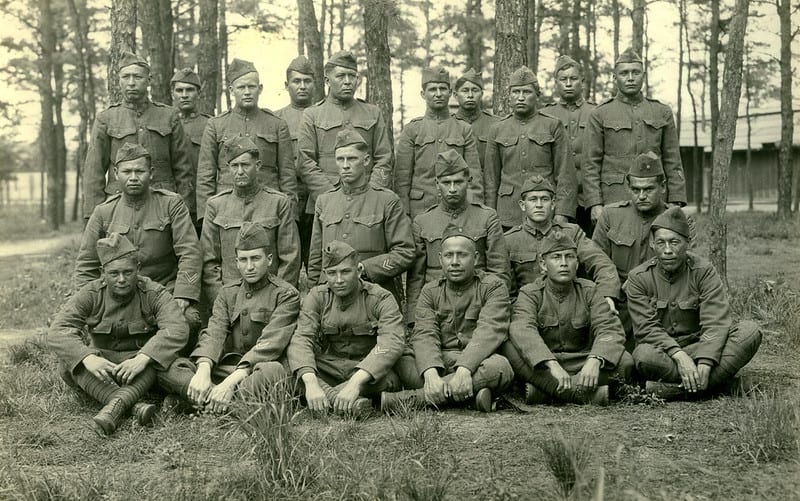
Uncommon Valor Exemplified
Private Calvin Atchavit hailed from Walters, Oklahoma, and was a member of the Comanche tribe. He was eventually awarded the prestigious Distinguished Service Cross, the second highest military honor in the United States Army.
As cited,
“Calvin Atchavit, private, Company A, 357th Infantry, 90th Division. For extraordinary heroism in action near Fey-en-Haye, France, September 12, 1918. During the attack of his company, though he had been severely wounded in his right arm, Pvt. Atchavit shot and killed one of the enemy and captured another.”
Amado Garcia and Lauriano Martinez hailed from New Mexico and members of the Pueblo tribe. In a preserved newspaper clip, D.J. Ryan writes,
“A crawl three hundred yards in front of the lines and through the enemy’s wire was a part of the preliminary work in an attack on a hostile machine-gun nest by three members of Co. K, 110th Infantry, 28th Division, on August 26, 1918, near Fismes.
The party included Amado Garcia and Lauriano Martinez from New Mexico, reported to the Catholic records through parishes at Albuquerque and Watrous. Doubtless, their Indian ancestry was a point considered in selecting them for a tour through the wire.Ten yards from their objective, they were fired on by the enemy. In the action that followed, the enemy crew resisted stubbornly-but scored poorly. The invading Americans dispatched three and drove off the others with clubbed rifles.”
Both men earned the French Croix de Guerre with a Gilt Star, and the Distinguished Service Cross for their valor.
Native Code
Native Americans resonate with legend and story. Both are an essential cultural stratum. Indigenous oral traditions preserve their chronicles, to be passed down from generation to generation. Accounts of men who demonstrated prowess and valor in war.
The first American warfighters strove to mirror those indigenous warriors, who were not merely relics of the past, but examples to emulate in the present.
Native American bravery moved beyond the front lines. Conflict is not purely violence, and a well-oiled conventional force has multiple components, with specialized units supporting the ground combat elements.
One particular unit became a prototype that was replicated and built upon in the global conflict that took place a few decades after World War I ended.
A major problem Allied Powers faced was not as bullets or incoming fire, but the interception of radio traffic and code-breaking by the enemy. In particular, the Germans used cracked radio code to their advantage. This occurred in key flashpoints like the Meuse-Argonne Offensive in 1918.
A solution to the German code-breaking challenge was needed with urgency.
No Such Thing as Chance
By chance, an Army captain, walking through a camp, overheard a pair of soldiers talking in a language unfamiliar to him. The soldiers were from the 142nd Infantry Regiment, and were of Choctaw descent, whose tribes language the officer overheard.
The indigenous men informed the captain native soldiers at the company headquarters also spoke the Choctaw language. He quickly called his command and relayed a message in Choctaw that was translated by the natives on the other end.
Choctaw language is unique, in that it’s relatively internal to the Native American community. According to BBC,
“It was a largely unknown language. Only a few American Indian tribes had more than 20,000 people so their languages weren’t widely spoken, and most weren’t written down. Even if they were, it was usually only the Bible and hymns, which were consumed locally.”
A prospective solution turned into practical action and the Choctaw Telephone Squad formed. Commanders would tactically position native American men in the unit around the battlefield where they could transmit messages back and forth in Choctaw over the hook, which eased the threat of German detection.
The Choctaw Telephone Squad were instrumental in future victories, and the precursor to the fabled Code Talkers in World War II.
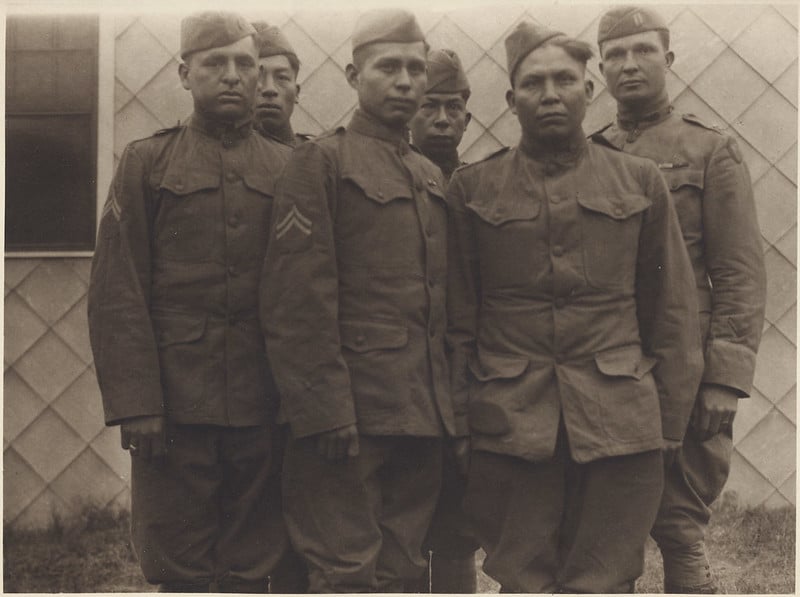
Aftermath
We traditionally meet troops returning home from war with celebration and reverence from the public.
Parades, media attention, and a heightened patriotic atmosphere. We as a society give thanks to those who came back, and mourn the lives lost.
Overall, returning from war symbolizes the conclusion of an experience that transcends normal life for those who experience it. One would imagine all service members receive the same treatment when they cross over domestic lines, but that far from the case for the Native Americans who fought in World War I. John Maynard writes,
“Indigenous contributions to the Great War and a genuine lack of acknowledgment of that contribution have long aggrieved Indigenous families and communities. Thousands of Indigenous men fought for their country in World War I, many making the ultimate sacrifice. On returning home many of the Indigenous veterans were disillusioned and frustrated that their courage and bravery were not rewarded with due recognition of their service for their country.”
Not only were their achievements overlooked, but fighting and bleeding for the nation wasn’t even enough to gain citizenship.
The federal government made some progress eight years after the war when the Indian Citizenship Act took effect on the 2nd of June 1924. The act gave citizenship and the right to vote for all Native Americans in the United States, but with some exceptions. According to the Library of Congress, they gave states the right to enforce their own laws, and some did until 1957.
World War I was a pivotal moment in Native American culture, and the warrior spirit that was shown in Europe re-surged mere decades later.
Native Americans in World War II
“The Indian is the best damn soldier in the Army.”
Major. Lee Gilstrop
World War II. From 1939 to 1945, most of the world found itself in another conventional conflict, primarily between the Axis and Allied Powers. Battlefields were in Europe, Africa, and the Pacific. So on and so forth…
Domestically, the Native American population was continuing to suffer the effects of post-World War I. Economic hardship, lack of jobs, and limited educational opportunities were some issues effecting indigenous peoples. Societal structures limited tribes to life on reservations, surrounded by a growing American culture that was nullifying their own.
On the 7th of December 1941, an unprecedented catastrophic event transpired on American soil: Pearl Harbor.
Japan’s aerial strike in Pearl Harbor, Hawaii, brought the US into the war effort, starting with the Pacific Theater, and later joining other Allied Forces in Europe. The nation became energized, and its once isolationist posture towards the war changed overnight.
Answering the Call
Mirroring World War I, Native Americans once again felt called to join the fight. After all, the United States is, in theory, their rightful land. For them, it was less about fighting for the United States—not nullify that aspect, for it was prevalent—but to fight on behalf of their ancestors, and the soil that was once theirs.
As aforementioned, the ancestors of indigenous service members were the antecedent for their zeal and prime performance on the battlefield. Accounts claim Native Americans were some of the best recruits in basic training and were already proficient in the survival skills that were lacking in most non-indigenous citizens enlisting or being drafted.
Not only that, but the indigenous way of life bred them to be commandos. Historian Thomas Morgan writes, “Native Americans endured thirst and lack of food better than the average soldier. They had an acute sense of perception and excellent endurance, along with superior physical coordination.”
Over the duration of the war, 25,000 Native Americans served among the various branches in the US Armed Forces.
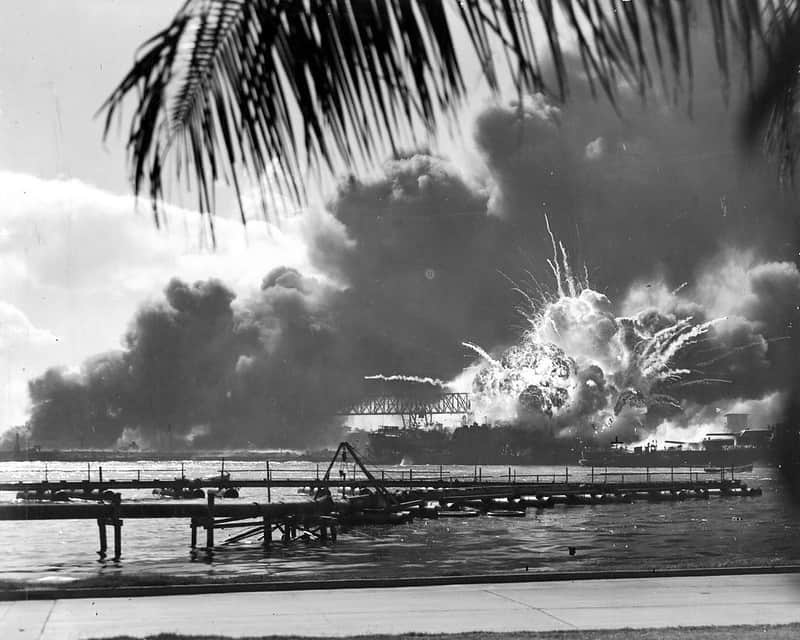
The Machita Incident
Patriotism and duty didn’t reach all corners of the Native American community. Some (albeit a rather small percentage) resisted service and did not forget the sins of the nations past towards their people.
One lesser known instance of Native American resistance is “The Machita Incident”, or as some call it “Arizona’s last great Indian war”.
Pia (translating to “man without a grindstone”) Machita was a leader in the Tohono O’odham tribe of Arizona. An anti-establishment attitude was prominent amongst the members of Pia’s smaller community within the tribe, who rejected the Gadsden Purchase, and opposed government or “Anglo” intervention in their people’s affairs.
On the 16th of December 1940, Washington D.C. put the Selective Training and Service Act of 1940 into effect. At first, all men between the ages of 21-36 faced a mandate to register for the draft, but the low age dropped to 18 after the start of World War II.
Resistance and Confrontation
With Native Americans being considered US citizens at this point (mostly), the Act applied to them as well. Pia Machita viewed this as a repetition of government oppression and formed an insurrectionist movement amongst the draft eligible men in his tribe. Their intent was to refuse registration.
The US government sent representatives onto the Tohono O’odham reservation to conscript eligible men on the 13th of October 1940. It isn’t much of a surprise, but they resisted, and refused to sign the paperwork.
In response, on the 16th of October 1940, the government sent more representatives, except this time, instead of pens and paper, they wielded firearms and tear gas.
As written by scholar Elmer W. Flaccus, federal law enforcement conducted a raid on Pia Machita and his resistance. There were no casualties, and Pia fled the area with some of his men, beginning a seven-month long search conducted by federal law enforcement. Eventually, the law found Pia in Arizona and sentenced him to an 18-month prison sentence. The judicial system later granted Pia a reduced sentence after advocacy from his tribe.
Native American Women in World War II
Native American women showed the same level of sacrifice and bravery as the men.
Although their enlistments were fewer, they stood right alongside indigenous men in the recruiting station lines. A 1943 quote from a Lakota Sioux student named Margie Williams is powerful in explaining why women would willingly serve in the war. She writes,
“It is with much pride that the Indian woman dons the uniform of her country . . . The Redman is proving to his white brother that he can make an outstanding contribution, both on the home front and behind the firing lines. With the same pride and devotion, the Indian woman is proving herself to be one of Uncle Sam’s priceless daughters”
There is a reason that is a reoccurring theme throughout this article. It’s hard to ignore how profound the above sentiment is. The women wanted to prove themselves to be considered an American, even at the risk of life and limb. Patriotism was something very real to them. It was one act to fight for the values of the United States. It’s a higher one to do so for your ancestral homeland.
Service at Home
They did not limit native American women to the military in terms of service. Many of them contributed to the domestic war effort, which was a popular industry for women of all ethnicities during that period. One in four Native American women worked in factories, in cities off the reservation. That experience exposed them to a different life and culture, that lacked familiarity.
Native American women also found themselves active on the reservations and took leadership roles given up by the men who were overseas. With a such a large percentage of the tribe populations being men who were away, indigenous women had to step into traditionally male roles, such as manning fire lookouts, chopping wood, and farming. The role Native American women played in World War II embodied the idea of duty and sacrifice.
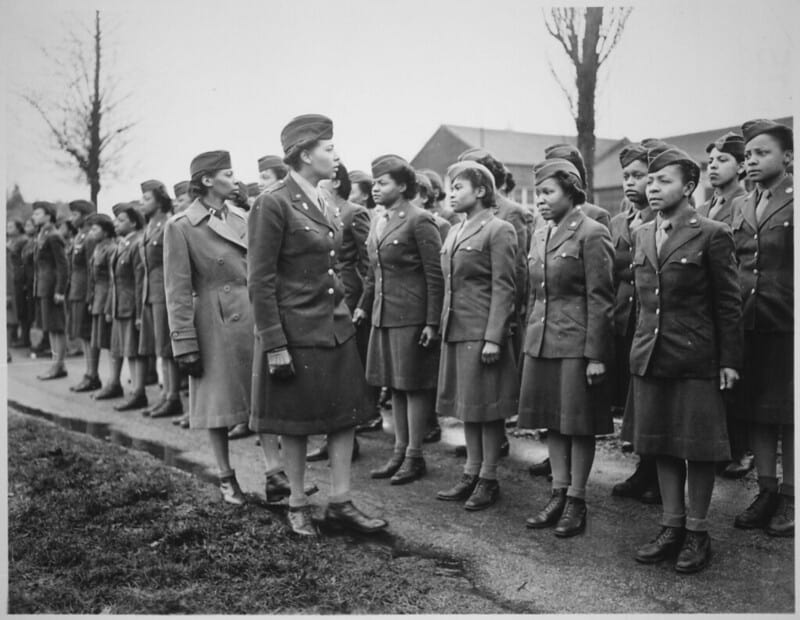
Changing gears, it’s time for an expose on one Native American warfighter. “Epic” isn’t even the proper term to describe this, as you will see.
Everything you are about to read happened. No fabrication, and no hyperbole included for dramatic effect. War Chief Medicine is more than a legend. He was a living god of war.
War Chief Medicine Crow
Joseph Medicine Crow was born on the 27th of October 1913, on the Crow Indian Reservation in Lodge Grass, Montana.
He grew up hearing oral stories from tribe elders who were present at the battle of Little Bighorn, making him one of the last members of his nation to have a firsthand account.
Life on the reservation was difficult, and the Crow Nation was suffering great calamity during his youth. Young Joseph could discern what needed to be done to help change his tribe’s circumstances in the future. He wanted to pursue an education – something that uncommon within his community, and that could transfer into skills to help it.
Medicine Crow excelled through school, graduating from Linfield College in 1939, and then completing a graduate course in anthropology at the University of Southern California. He was the first member of the Crow Nation to be awarded a master’s degree.
Like other Native Americans, Pearl Harbor influenced Medicine Crow. In 1943, he left behind a job working at the naval shipyard in Bremerton, Washington, and enlisted in the US Army, eventually being assigned to the 103rd Infantry.
The Trials of the War Chief
As is common amongst indigenous service members, Medicine Crow wanted to fight in the name of his ancestors, harnessing the stories and accounts of their heroism and strength passed down during his tribal upbringing.
The 103rd Infantry deployed to Europe to fight the Germans, which is when Medicine Crow’s story turns into legend.
For context, there are four qualifications a tribe member must meet in order to earn the title Chief of Tribe:
- Touch or strike an enemy without killing him
- Wrestle a weapon away from an enemy warrior
- Command a war party successfully
- Enter an enemy camp at night and steal a horse
Earning the Title
Medicine Crow knocked out the first two qualifications in one event. According to the National Park Service,
“His unit hit a little town with just one main street. He did not want to participate in such a raid but instead asked his superior’s permission to have a little extra time to accomplish a deed.
The Commanding Officer (C.O.) sent him around the street and down an alley. He saw an opening in a gate and a German was doing the same thing. They bumped heads and Joe gave him a butt stroke with his rifle and knocked the enemy’s rifle out of his hand.”
For the third qualification, Medicine Crows company was behind enemy lines, devoid of ammunition, and locked in fierce combat. He bravely led a squad of men through heavy fire and obstacles back to Allied territory. After loading up some ammunition, Crow led his squad back across German lines and successfully resupplied his company.
While conducting a scouting mission under the cover of darkness, Medicine Crow carefully stalked horse-mounted German soldiers. When the opportunity arose, he stole a horse, gathered the rest, and took off into the distance. That act fulfilled all the requirements needed to earn the title.
With all the qualifications complete, Joseph Medicine Crow became the Chief of Tribe: the last living member of the Crow Nation to carry that title.
His accolades from World War II include the Bronze Star, French Legion of Honor, Gold Congressional Medal of Honor, an honorary doctorate from the University of California. He was and also awarded the Presidential Medal of Freedom by President Barack Obama in 2008.
Chief Joseph Medicine Crow passed away on the 3rd of April 2016, in his home state of Montana.
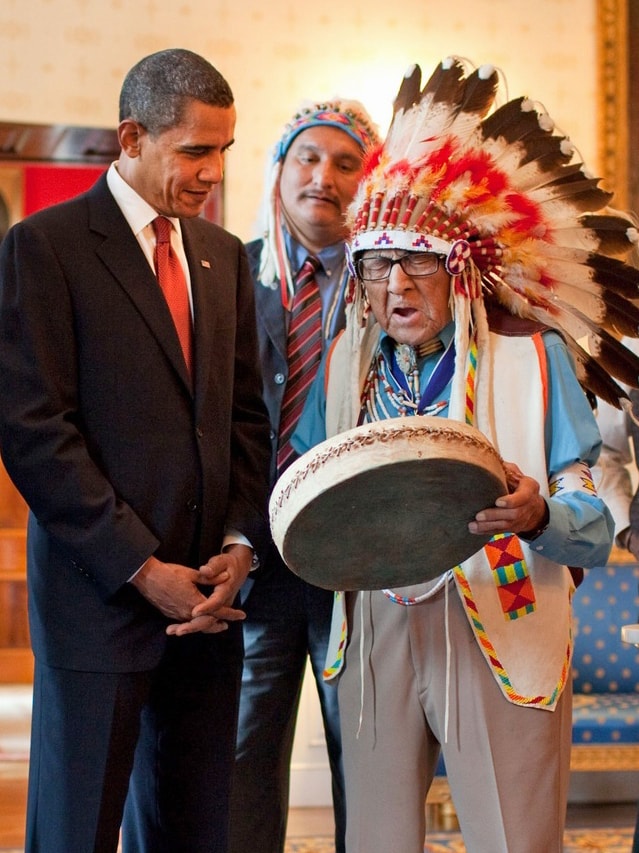
The Navajo Code Talkers
The Navajo Code Talkers are a revered unit of Native Americans in World War II, and the spiritual successors of the World War I Choctaw Telephone Squad.
Like World War I, the threat of enemy interception of communication was prevalent. The former wars after-action reports highlighted the effectiveness of the Choctaw speakers. That inspired a recruiting effort directed at Native American men who could speak their tribe’s unwritten language.
There were multiple different code talker units, but the Marine Corps Navajo Code Talkers are arguably the most famous one to operate in World War II.
A New Language of War
Navajo language is complex and unwritten. Outside of the tribe, there is a disproportionate number of non-Navajo people who can understand it. Complex dialects, syntax, and tone fluctuations are the perfect blend of linguistic attributes for verbal cryptography.
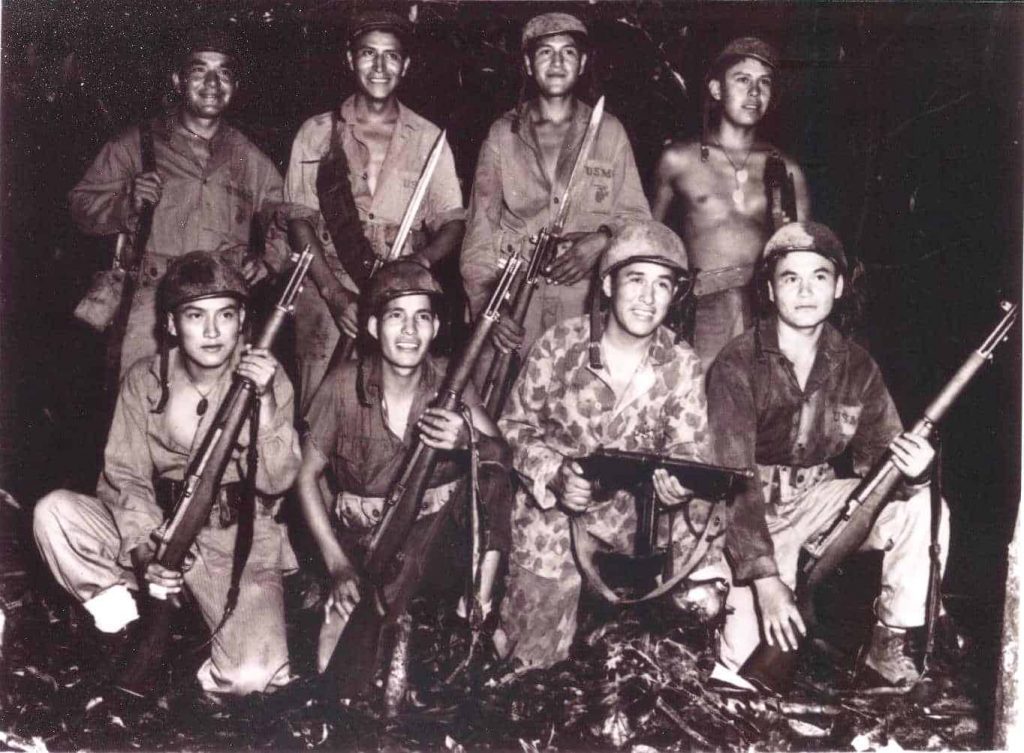
Philip Johnson, a World War I veteran, was one of the few people speak fluent Navajo outside of the tribe. He was also aware of the defense departments’ ongoing search for a Native American language suitable for communications code. According to the Naval History and Heritage Command,
“Early in 1942, Johnston met with Major General Clayton B. Vogel, the commanding general of Amphibious Corps, Pacific Fleet, and his staff to convince them of the Navajo language’s value as code. Johnston staged tests under simulated combat conditions, demonstrating that Navajos could encode, transmit, and decode a three-line English message in 20 seconds. Machines of the time required 30 minutes to perform the same job. Convinced, Vogel recommended to the Commandant of the Marine Corps that the Marines recruit 200 Navajos.”
The Corp honoured Johnson’s recommendation and began recruiting Navajo men who went through the same boot camp as other Marine enlistees. Upon completion, the first wave of 29 Code Talkers began developing a code. They used Navajo words in replacement of individual English letters, akin to the phonetic alphabet system used by the contemporary armed forces.
Navajo Code Talker, Chester Nez, was present. In his own words,
“This major took us into a great big room and he said, ‘you guys are going to have to make up a code in your own native language,’ that’s all he said. He left, closed the door behind him, and locked the door.”
Past Meets Future
The result was two codes. The first code, “Type 1”, comprised 26 Navajo terms that stood for individual English letters. For instance, the Navajo word for “ant,” wo-la-chee, was used to represent the letter “a” in English, writes the National World War II Museum.
Type 2 code expanded on Type 1, resulting in a larger dictionary. This version included new combinations of Navajo words to translate English words foreign to the language.
For example, “besh-lo” is a Navajo word for “iron fish”, which translates to submarine, and atsá translates to eagle, which is code for a military transport plane.
A later dictionary contained over 600 words is accessible in digital form, courtesy of the Naval History and Heritage Command.
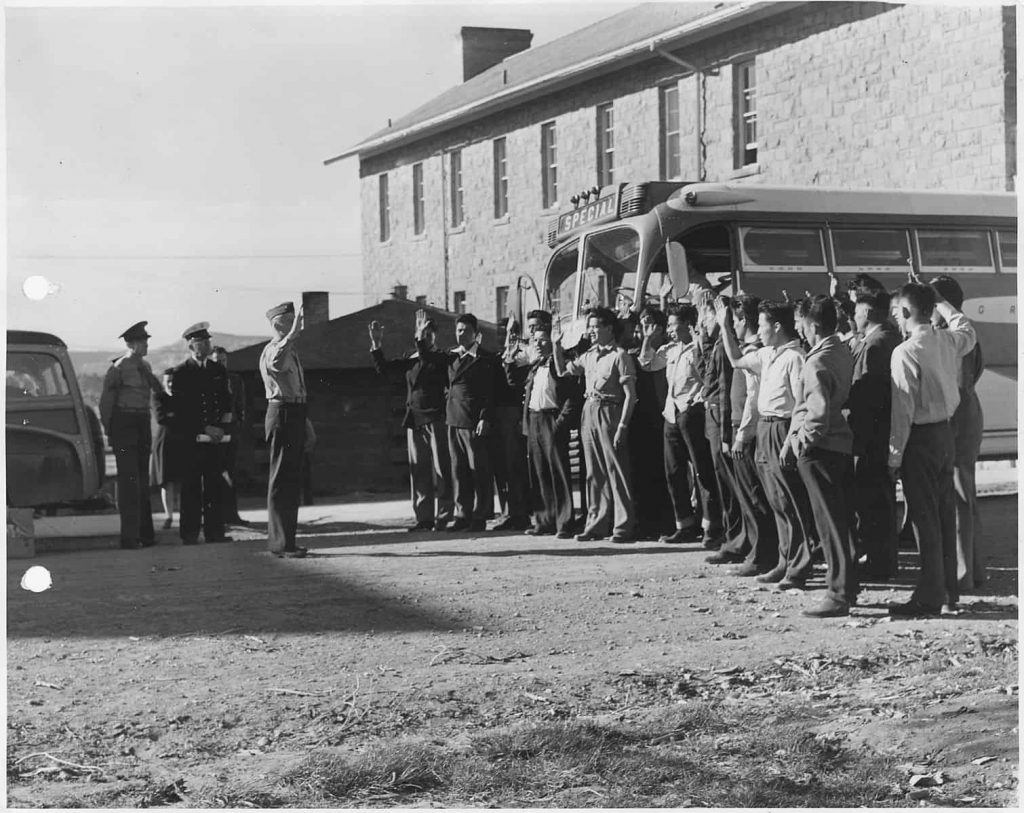
Baptised by fire
On the 7th of August 1942, The Navajo Code Talkers stormed the beaches of Guadalcanal with the First Marine Division.
This was their trial by fire – the first time they performed their role in a battlefield setting, where kinetic warfare and the fog of war could impede the performance of an already difficult mental task. They ultimately persevered and conducted translations throughout the battle without the Japanese decoding their communications.
Following Guadalcanal, the Marine Corps deployed the Navajo Code Talkers to every operation in the Pacific Campaign, with continuous success.
Some men from the unit endured harrowing instances, like Fleming Begaye Sr, who experienced his landing vessel being struck by enemy fire during a beach assault. That resulted in him having to swim to the beachhead under fire, receiving life threatening wounds along the way.
The Code Talkers’ work directly affected the success of the Battle of Iwo Jima. According to the Office of the Director of National Intelligence,
“six Navajo Code Talker Marines successfully transmitted more than 800 messages without error. Marine leadership noted after the battle that the Code Talkers were critical to the victory at Iwo Jima.”
No Axis Power was able to crack the Navajo Code Talkers encryption for the duration of World War II.
By the end of the war, roughly 400 indigenous Marines served in the unit. That number only accounts for the Navajo personnel. Multiple other similar units existed throughout the armed forces.
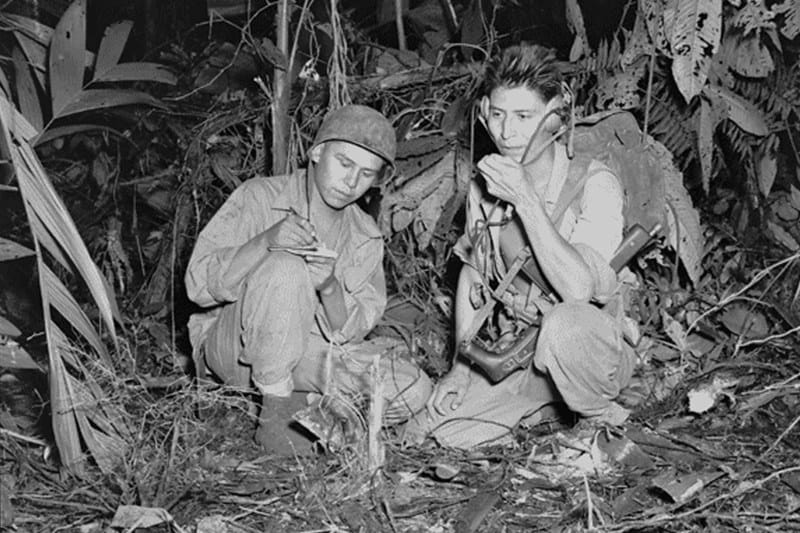
Aftermath II
The Navajo Code Talkers received many awards, including all 29 original members being presented the Congressional Gold Medal in 2001 by President George W. Bush. As of this year, only four men who served in the program remain alive.
Native Americans struggled after World War II. It was like the post-World War I era all over again. Once again did they return from the greatest war in world history to be forgotten by the public they so valiantly served. Thomas D. Morgan writes,
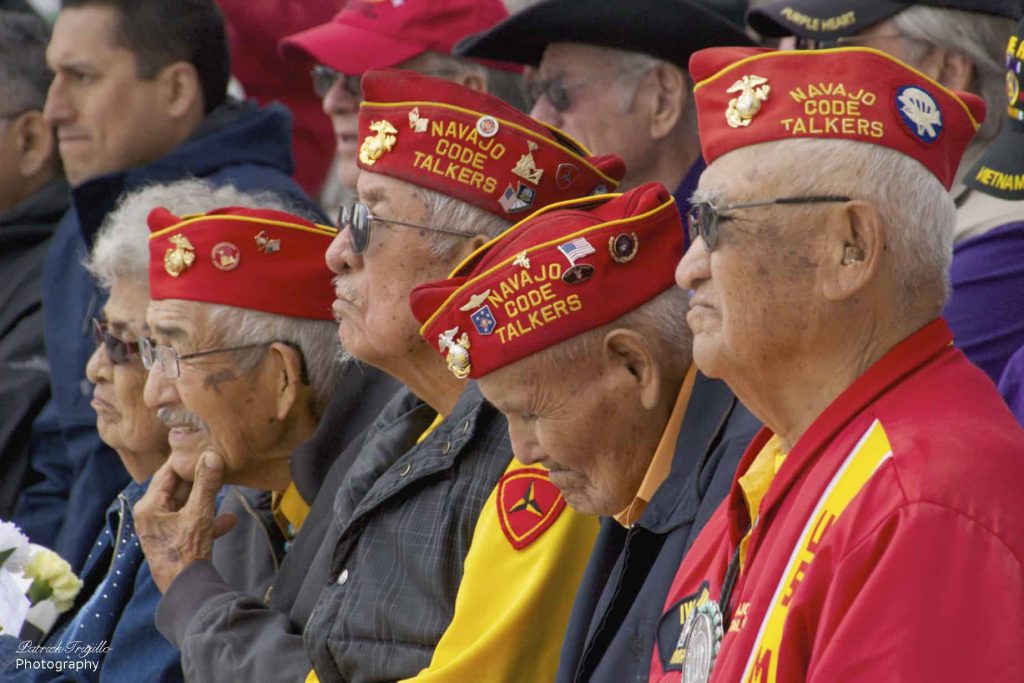
“The wartime economy and military service took thousands of Indians away from the reservations. Many of these Indians settled into the mainstream, adapting permanently to the cities and to a non-Indian way of life. Moreover, thousands returned to the reservation even after they had proved themselves capable of making the adjustment to White America. Those who left traditional cultures did not necessarily reject their heritage. Instead, they forged a new Pan-Indian identity to cope with the differences they perceived between themselves and whites.”
A cultural crisis ravaged the reservations. Already suffering tribes were being pushed further and further away from their ancient ways of living and being forced to assimilate to “White America”. Indigenous veterans did not receive the same star treatment another service members, and many came home and fell into alcoholism, poverty, and Post Traumatic Stress Disorder.
There were some benefits for some indigenous participants of the war. The GI Bill and other Department of Veterans Affairs programs were available to them. Some Native American veterans traded reservation life for college and other professional sectors. Many became leaders, using the warrior spirit that drove them in war to lead people in their communities, both on the reservation and off.
Closure
It is an act of supreme grace Native Americans would want to help the United States in virtually any foreign war, yet they did.
They did with patriotism and selflessness; honor, courage, and commitment, as the Marine Corps so elegantly preaches.
At first, they had to depart from their land, as European colonizers moved in, starting the decline in their culture, and the forced assimilation into a Western way of life.
Then, they departed once again, off their reservations and across the sea, taking part in something far greater than self, fighting for the nation that betrayed them, and doing so with the same level of bravery and courage as their white brothers and sisters in arms.
Twice…
Thomas Morgan writes,
“They left the land they knew to travel to strange places, where people did not always understand their ways. They had to forego the dances and rituals that were an important part of their life. They had to learn to work under non-Indian super visors in situations that were wholly new to them.”
To Wars Beyond
Although the conclusion of World War II ushered in a new era for the United States, and for the native American community, large-scale conventional warfare was far over. Native Americans continued to volunteer in the Korean War, Vietnam War, Desert Storm, and the recently concluded Global War on Terror.
In the words of Sitting Bull,
“I am a red man. If the Great Spirit had desired me to be a white man he would have made me so in the first place. He put in your heart certain wishes and plans, in my heart he put other and different desires. Each man is good in his sight. It is not necessary for Eagles to be Crows. We are poor… but we are free. No white man controls our footsteps. If we must die…we die defending our rights.”
Dying defending their rights, they surely did, for freedom, that they deserved more than any other community in this nation.
May their legends and stories from the Great Wars live on forever.
May the remaining survivors rediscover their sense of belonging…
